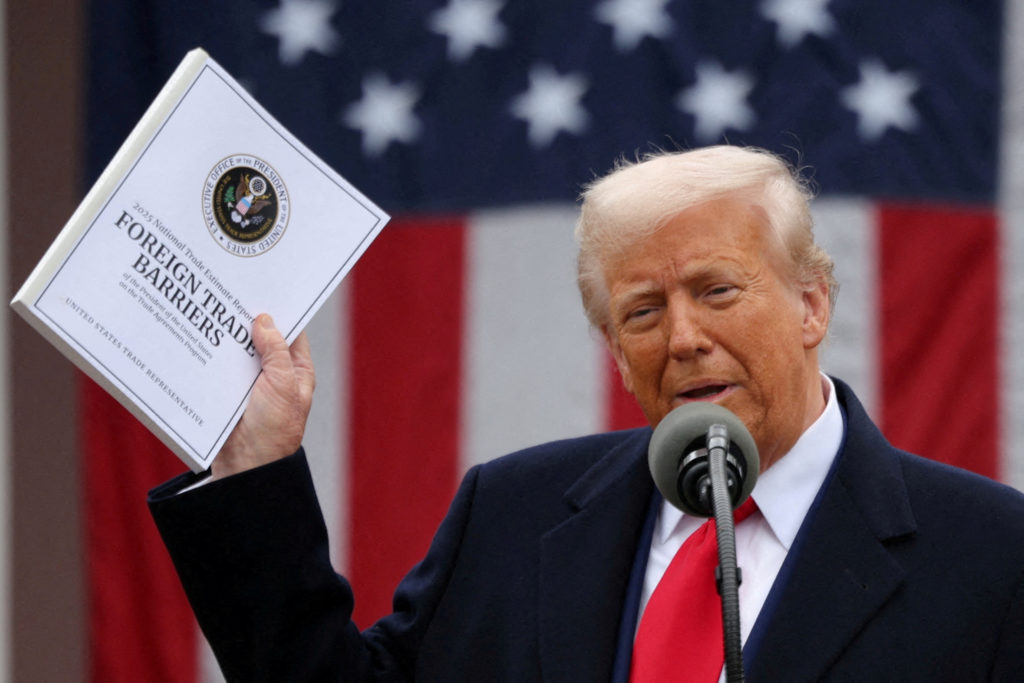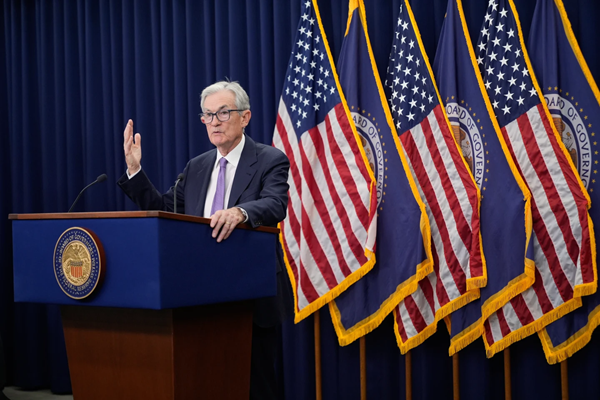
Trump’s May 2025 policies fuel long-term stock market shifts.
At GLHR Investing, we’re tracking President Donald Trump’s whirlwind policies to understand their ripple effects on your portfolio. This week, May 1–7, 2025, Trump’s actions—ranging from tariff maneuvers to Federal Reserve pressure—continued to fuel market volatility, with the S&P 500 (SPY) at $513.88, down 4.8% year-to-date. With tariffs, inflation fears, and a 60% recession risk shaping the economy, how will these moves impact stocks over the long term? Here’s a breakdown of Trump’s key actions this week and their potential effects on the stock market in the coming years.
- Trump’s Key Actions (May 1–7, 2025):
- Tariff Policy Developments:
- China Tariff Escalation (May 6): Trump announced a potential 50% additional tariff on Chinese goods, effective May 9, if China didn’t rescind its 84% retaliatory tariffs. This followed April’s 125% China tariff, with exemptions for $102 billion in tech imports (e.g., smartphones, solar cells) announced April 30, per web data.
- Trade Negotiations Signal: Treasury Secretary Scott Bessent and U.S. Trade Representative Jamieson Greer emphasized ongoing talks with 70 countries, with Bessent suggesting a “detox period” for tariff adjustments, per web data. No new exemptions or pauses were confirmed this week, maintaining uncertainty.
- Federal Reserve Pressure:
- Powell Criticism (May 2–6): Trump reiterated calls for Fed Chair Jerome Powell to cut rates, claiming prices for “practically everything” are down, despite 3% inflation. On May 2, he posted on Truth Social demanding immediate cuts, raising fears of Fed independence erosion, per web data. Powell resisted, citing tariff-driven inflation risks (4% projected), per web data.
- Market Reaction: The S&P 500 fell 2.4% on May 6, with the Nasdaq down 2.6%, as investors worried about Fed policy disruptions, per web data.
- Economic Policy Signals:
- Corporate Earnings Focus: Trump’s team downplayed tariff volatility, urging investors to focus on Q1 2025 earnings, expected to grow 8.1% for the S&P 500, per web data. However, analysts noted tariff uncertainty clouded corporate guidance, per web data.
- Spending and Debt: Trump’s push to extend the 2017 Tax Cuts and Jobs Act and add new cuts (e.g., 15% corporate rate) could widen deficits by $1 trillion over a decade, per the Tax Foundation. This raised bond yield concerns, with the 10-year Treasury at 4.28%, per web data.
- Tariff Policy Developments:
- Stock Market Performance This Week (May 1–7, 2025):
- S&P 500 (SPY):
- Price Movement: SPY started May 1 at ~$518.40 (April 30 close, adjusted) and fell to $513.88 by May 9, a ~0.87% drop over the first week, with intraday volatility (e.g., $508.55 on May 6), per real-time data. The May 6 drop (2.4%) was driven by tariff threats and Fed concerns, per web data.
- Context: April’s 4.3% decline and 9.5% rally (April 9 tariff pause) set a volatile backdrop, with SPY down 15.6% YTD since Trump’s inauguration, nearing bear market territory (17.6% from February’s $613.23 peak), per prior analyses.
- Sector Impacts:
- Technology: Fell ~2%, with NVIDIA (-3%) and Tesla (-5%) hit by China’s rare earth bans and tariff costs, per web data. The semiconductor probe (April 16) continued to pressure chipmakers, per web data.
- Consumer Discretionary: Down ~1.5%, with retail (e.g., Nike, Amazon) facing import cost hikes, per web data. XLY ETF lagged, per Morningstar.
- Defensive Sectors: Utilities (SPLRCU) and staples (SPLRCS) gained ~1%, with gold up 3% to $3,300/ounce, reflecting safe-haven demand, per web data.
- Other Indices:
- Nasdaq 100 (QQQ): Down ~2%, worse than SPY, due to tech exposure, per X post @awealthofcs.
- Russell 2000 (IWM): Down ~2.5%, with a 19% YTD drop, signaling small-cap weakness, per X post.
- Sentiment: X posts noted a “mixed” market, with @grok highlighting tariff-driven volatility and @sallore102 citing a fragile recovery, tempered by China’s tariff stance, per web data.
- S&P 500 (SPY):
- Long-Term Stock Market Impacts:
- Tariff-Driven Volatility:
- Impact: Trump’s tariff escalations (e.g., 50% China threat, May 6) and ongoing probes could sustain volatility for 1–3 years, per J.P. Morgan. The S&P 500’s 15.6% YTD drop and $5 trillion loss since April 2 signal a bearish trend, with potential for a full bear market (20% drop) if tariffs resume, per web data.
- Sectors Affected:
- Technology: Long-term margin pressure from chip and component cost hikes (20–30% potential, per web data). NVIDIA and Apple may face sustained challenges, with China’s retaliation disrupting supply chains, per web data.
- Consumer Discretionary: Retail (e.g., Nike, Amazon) faces higher import costs, potentially raising consumer prices 2.3% and cutting demand (13% retail spending drop), per Penn Wharton. This could depress earnings for 2–5 years, per web data.
- Domestic Manufacturing: Steel (Nucor, U.S. Steel) and energy (Chevron) could see 10–20% revenue boosts from reshoring, lasting 5–10 years, if tariffs persist, per Goldman Sachs.
- Mitigation: Trade deals (e.g., U.S.-UK framework, May 8) could ease volatility, but negotiations with 70 countries may take years, per web data. A failure to secure deals by July 7 (tariff pause end) risks a 5–10% SPY drop, per Schwab.
- Inflation and Interest Rates:
- Impact: Tariffs could push inflation to 4% by 2026, per Powell, delaying Fed rate cuts (4.25–4.5% through 2025, per CME FedWatch). Higher rates may suppress growth stocks (e.g., tech) for 2–3 years, favoring value stocks (e.g., utilities, staples), per Morningstar.
- Bond Market Pressure: The 10-year Treasury yield (4.28%) may rise to 4.5–5% if deficits grow ($1 trillion projected from tax cuts), per web data. This could depress equity valuations, especially for high P/E tech, for 3–5 years, per web data.
- Fed Independence Concerns:
- Impact: Trump’s attacks on Powell (May 2–6) raise fears of eroded Fed credibility, potentially weakening the dollar (down 9% YTD) and U.S. bond demand, per web data. A loss of foreign investor confidence (China holds $750 billion in Treasuries) could spike yields, impacting stocks for 5–10 years, per web data.
- Market Reaction: The May 6 drop (SPY -2.4%) reflects short-term panic, but long-term risks include higher borrowing costs and reduced global trust, per web data. Powell’s reaffirmed independence (May 7) may stabilize markets, per web data.
- Recession and Growth Outlook:
- Impact: A 60% recession probability and -0.3% Q1 2025 GDP growth (Atlanta Fed) suggest a potential downturn by 2026, per J.P. Morgan. Tariffs may shave 1% off U.S. GDP and 0.2–1.5% off global trade in 2025, per the World Trade Organization, depressing cyclical stocks (e.g., autos, retail) for 2–3 years, per web data.
- Upside Potential: Tax cuts and deregulation could boost corporate earnings 5–10% by 2027, favoring financials and energy, if inflation stabilizes, per Morgan Stanley. However, deficit concerns may offset gains, per web data.
- Global Implications:
- Impact: Strained relations with allies (Canada, EU) and China’s retaliation could reduce U.S. exports, hitting multinationals (e.g., Boeing, Caterpillar) for 3–5 years, per web data. A weaker dollar (down 4.6% in April) may aid exporters but raise import costs, per web data.
- Safe Havens: Gold’s 3% rise and utilities’ strength suggest defensive assets may outperform for 1–3 years, per Morningstar.
- Tariff-Driven Volatility:
- Investor Considerations:
- Long-Term Outlook:
- Bullish Case: Trade deals and tax cuts could stabilize SPY at $550–$600 by 2027, with domestic sectors (steel, energy) gaining 20–30%, per Goldman Sachs’ 9% SPY forecast for 2025. Earnings growth (11% projected for 2025) may support recovery, per web data.
- Bearish Case: Persistent tariffs and inflation (4%+) could push SPY to $450–$480 (10–15% drop) by 2026, with tech and retail facing 20–30% earnings cuts, per J.P. Morgan. A recession may extend losses to 2027, per web data.
- Is It a Good Time to Buy?:
- Verdict: Selective buying in defensive and domestic stocks is prudent, but broad market purchases are risky due to tariff and recession uncertainties. SPY’s 8% discount (Morningstar) offers value, but volatility (VIX ~35) suggests caution.
- Buy Recommendations:
- Defensive Sectors: Utilities (XLU, up 1%), staples (XLP), and gold (GLD, up 3%) for stability over 1–3 years. Stocks like AT&T (T, $28) and Walmart (WMT, $80) are tariff-resistant, per prior analyses.
- Domestic Manufacturing: Steel (Nucor, NUE, $160) and energy (Chevron, CVX) for 20–30% upside if reshoring accelerates, per Goldman Sachs.
- Avoid: Tech (e.g., NVIDIA, Apple, down 2–3%) and import-heavy retail (e.g., Nike, Amazon) due to tariff risks, per Schwab. XLK ETF faces downside, per web data.
- Strategy: Allocate 5–10% to XLU, XLP, or GLD, hedging with 3–5% in bonds (TLT). Dollar-cost average to manage volatility. Monitor Q1 earnings (May 12–15) and trade talks for signals, per Morningstar.
- Risks:
- Tariff escalations (e.g., 50% China tariff) or failed trade talks could trigger a 5–10% SPY drop by July, per Schwab.
- A recession (60% risk) and rising yields (4.5–5%) may depress equities for 2–3 years, per J.P. Morgan.
- Fed independence erosion could weaken global trust, raising borrowing costs long-term, per web data.
- Long-Term Outlook:
- Why It Matters: Trump’s May 2025 moves—escalating China tariffs, pressuring the Fed, and signaling trade talks—have deepened stock market volatility, with SPY down 0.87% this week and 15.6% YTD. Long-term, tariffs could reshape sectors, boosting domestic manufacturing while pressuring tech and retail for years. With a 60% recession risk and inflation fears, selective investing in defensive and domestic stocks is key. At GLHR Investing, we’re here to help you navigate this chaos, building wealth through strategic, resilient choices.
Stay vigilant with GLHR Investing—let’s shape your future in turbulent times!
Disclaimer: GLHR Investing is not a financial adviser; please consult one.








